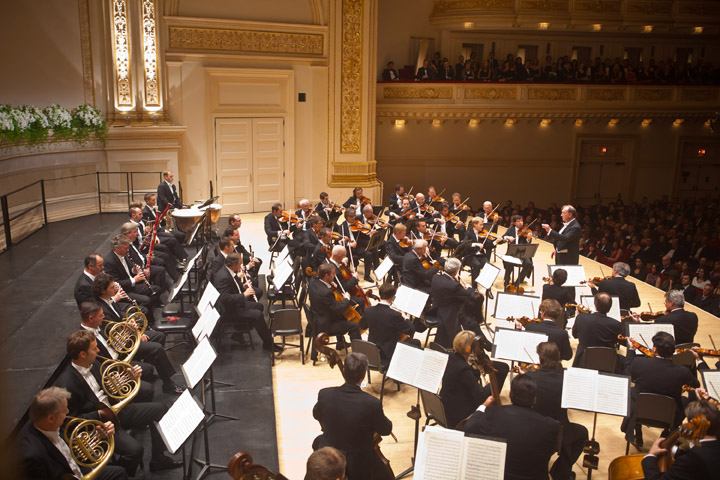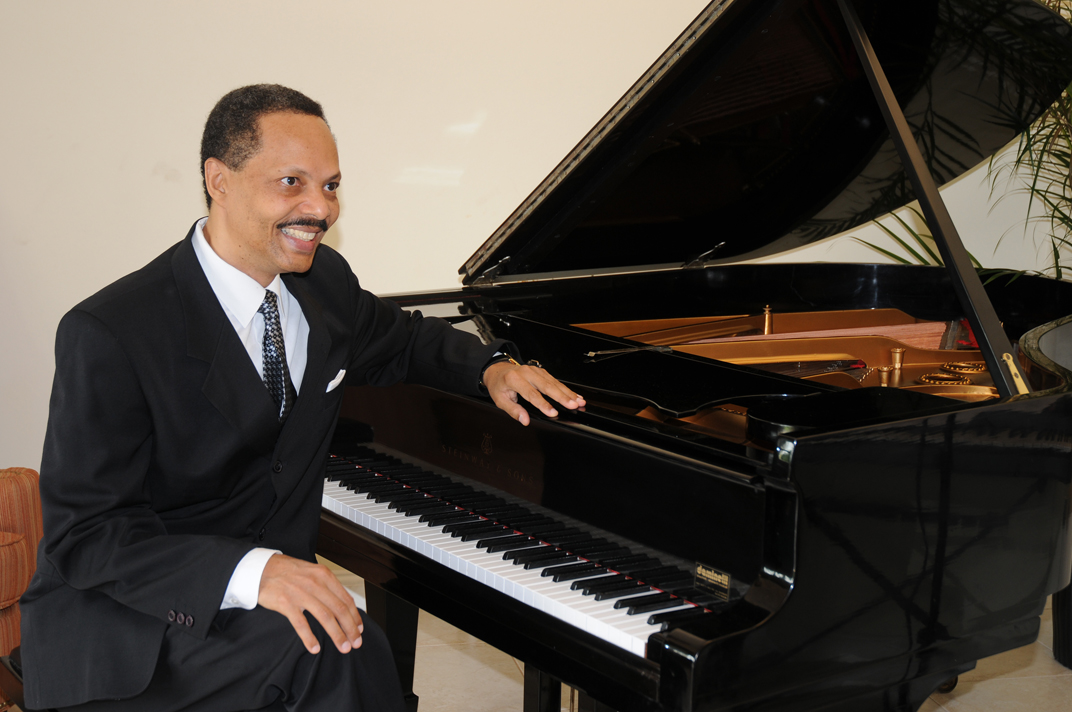[Mahler was an inveterate reviser; he subjected many of his works to years of sporadic major and minor emendations, sometimes beyond their premieres. The First and Fourth symphonies are extreme examples of this obsessive self-criticism; he kept revising the First from 1884 to 1906 and the Fourth from 1892 to 1910.]
One of the most astounding aspects of Gergiev’s Mahler series was that all five concerts took place within a single week, during which the Orchestra also performed the Eighth Symphony in Washington, and Gergiev conducted “Boris Godunov” at the Metropolitan Opera. It was an extraordinary tour-de-force, a feat of physical, mental and emotional endurance that would cause battle-fatigue in the hardiest, most indefatigable musicians. But not until the last concert did they exhibit any kind of strain; their concentration seemed to flag, the horns clammed, intonation and ensemble precision were shakier than before. Toward the end, they rallied, marshaling their energy for the final push.
Having begun his Mahler series with the thorny, dark Symphony No.6, Gergiev concluded this installment with two of the brightest, most accessible ones: No.1 and No.4.
Mahler wrote his Sixth Symphony in 1903 and 1904, as usual in the summer. He had married his beloved Alma a year earlier; their first child had just been born and they were expecting another. It seems paradoxical that he composed the symphony he himself called the “Tragic” during that singularly happy time; some scholars have suggested that this was precisely what gave him the strength and courage to look into the darkness of the abyss. The sunny, cheerful Fourth Symphony with its sleigh-bells and its childlike, innocent description of heaven, on the other hand, was written during the early years of his musically and politically embattled Directorship of the Vienna Opera.
Among Mahler’s symphonies, the Fourth, begun in 1899, is unique in its comparative sunny brightness and cheerful spirit. This is already indicated in the movements’ tempo markings, which range from “comfortable” to “tranquil” and warn against haste and hurry. The orchestration, too, is lighter than usual, omitting low brass and percussion in favor of glockenspiel and sleigh-bells. But it is still haunted by and sarcasm and eerie thoughts of death: the third movement is a spooky waltz called “Death plays for the dance,” a violin solo to be played on an instrument tuned a whole-tone higher to produce a strident, grating sound. (The concertmaster uses a second violin already re-tuned.) Leading into the from. The long slow Variation movement climaxes in a sudden burst of ecstasy that subsides to bring in the Finale: a setting of his early “Magic Horn” song “The Heavenly Life”, for soprano. Mahler originally planned to use it in the Third Symphony, but then felt it fitted better into the Fourth. It depicts a child’s vision of Heaven and is a companion-piece to the song “The Earthly Life.” Both are meditations on food: the “Earthly Life” describes a child starving for want of bread, the “Heavenly Life” describes a plethora of meat, vegetables, fruits, breads, and their preparation by saints and angels. Finally, it becomes a paean to celestial music and ends in blissful serenity.
Soprano Anastasia Kalagina in her third appearance on the series avoided the twin dangers, which Mahler himself warned against, of sounding either childlike or condescending, and sang with natural warmth and delicacy. The only cavils were that the violin solo sounded too civilized, not raucous or menacing enough for a “Dance of Death,” and that the strings “milked” the sentimental Viennese slides too gleefully.
The First Symphony, begun in 1884-1888, expresses Mahler’s profound love of nature. (It originally had a fifth movement which Mahler later suppressed and which is heard today occasionally as a separate piece. The title “Blumine” is derived from the word “Blume” – flower.) It begins with a soft tone in the highest register, heard as if from a distance – Mahler says “Like a sound of nature.” Comparatively straight-forward structurally, it is not yet subject to as many eruptions of wrenching agony and fits of fury as the later symphonies, though perceptive listeners can already detect the seeds of those characteristics. It includes no voices, but is full of allusions to vocal music: two of Mahler’s own “Songs of a Wayfarer” and “Frere Jaques,” (known to German-speaking children as “Brother Martin”) in the minor mode. First stated as a mournful double-bass solo, it is developed into a slow, solemn, lugubrious canon that winds through the whole orchestra, then turns into a grotesquely distorted dance, complete with sliding strings and shrilling woodwinds. It is significant that, in addition to the title “Titan,” Mahler initially provided an elaborate descriptive program for each movement, and discarded it (as he later also did with the Third Symphony) when he felt that audiences no longer needed a roadmap through them.
New York audiences owe Gergiev and the Mariinsky Orchestra a great debt of gratitude for this concentrated immersion in Mahler’s symphonies, and look forward avidly to the cycle’s completion in February.



 Born in South Korea, Rira Lim began playing the piano at age four, and at age 14 made her orchestral debut in her native Gwangju. After graduating from Yonsei University in Seoul, she continued her studies at the University of Texas, earning Master and Doctor degrees. She has performed in solo and chamber music in Asia and Europe, and won prizes in several international competitions.
Born in South Korea, Rira Lim began playing the piano at age four, and at age 14 made her orchestral debut in her native Gwangju. After graduating from Yonsei University in Seoul, she continued her studies at the University of Texas, earning Master and Doctor degrees. She has performed in solo and chamber music in Asia and Europe, and won prizes in several international competitions.
